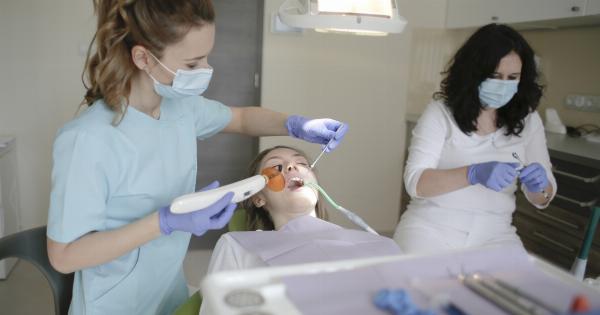Colon cancer, also known as colorectal cancer, is one of the most common types of cancer worldwide. It develops in the colon or rectum and can be life-threatening if not diagnosed and treated at early stages.
Early detection is key to improving overall survival rates and enhancing patient outcomes. Colonoscopy is a diagnostic procedure that plays a vital role in the early diagnosis and prevention of colon cancer.
Understanding Colonoscopy
Colonoscopy is a medical procedure that allows visual examination of the entire colon and rectum. It involves the use of a long, flexible tube with a camera and a light source called a colonoscope.
During the procedure, the colonoscope is inserted through the rectum and guided towards the colon. The camera provides real-time images of the colon lining, allowing the physician to identify any abnormalities, including polyps, ulcers, or tumors.
Colonoscopy as a Diagnostic Tool for Colon Cancer
Colonoscopy is considered the gold standard for diagnosing colon cancer. It provides a direct visualization of the colon and allows for tissue biopsy or polyp removal during the same procedure. This minimally invasive procedure offers several benefits:.
1. Early Detection
Colonoscopy enables the early detection of colon cancer and pre-cancerous lesions, such as polyps. Early detection increases the chances of successful treatment and improved patient outcomes.
2. Comprehensive Examination
Unlike other screening methods, colonoscopy allows for a comprehensive examination of the entire colon and rectum. This ensures that no abnormalities are missed, reducing the chances of false-negative results.
3. Polyp Removal
During colonoscopy, polyps can be identified and removed using specialized tools. This reduces the risk of these polyps turning into cancerous growths over time.
4. Precise Tissue Sampling
Colonoscopy allows for the collection of tissue samples, known as biopsies, for further analysis. These biopsies help in confirming the presence of cancer cells and determining the stage of the disease.
Who Should Undergo Colonoscopy?
Colonoscopy is recommended for individuals who are at high risk of developing colon cancer, as well as those who show symptoms or have an abnormality detected in other screening tests.
High-risk individuals include those with a family history of colon cancer, a personal history of inflammatory bowel disease, or a genetic predisposition to colorectal cancer.
Preparing for a Colonoscopy
Prior to the procedure, patients are required to follow specific preparation instructions to ensure a clear colon for optimal visualization. These instructions usually involve a clear liquid diet and taking laxatives or enemas to empty the bowels.
It is essential to discuss any medications or allergies with the healthcare provider beforehand.
The Colonoscopy Procedure
The colonoscopy procedure is typically performed on an outpatient basis and takes approximately 30 to 60 minutes to complete. The steps involved in a colonoscopy procedure include:.
1. Sedation
Prior to the procedure, patients are given sedatives to help them relax. This ensures the comfort and cooperation of the patient during the examination.
2. Insertion of the Colonoscope
The colonoscope is gently inserted through the rectum and carefully advanced through the colon. The images captured by the camera are displayed on a monitor, allowing the physician to examine the intestinal lining in real-time.
3. Polyp Detection and Removal
If any polyps are found during the examination, they can be removed using specialized tools through the colonoscope. This procedure, known as a polypectomy, helps prevent the development of potential cancerous growths.
4. Tissue Biopsy
If abnormal areas or tumors are observed, the physician may collect tissue samples for further analysis. These samples are sent to a laboratory for pathology testing to confirm the presence of cancer cells.
5. Completion and Recovery
Once the examination is complete, the colonoscope is carefully withdrawn, and the patient is taken to a recovery area. The sedative effects can take some time to wear off, so patients are usually advised to have someone accompany them home.
Colonoscopy Risks and Complications
While colonoscopy is generally a safe procedure, there are potential risks and complications associated with it. These may include:.
1. Perforation
In rare cases, the colonoscope can create a small hole in the wall of the colon or rectum, leading to a perforation. This requires immediate medical attention.
2. Bleeding
Polyp removal or tissue biopsy can cause slight bleeding. While most cases of bleeding resolve on their own, excessive bleeding may necessitate further medical intervention.
3. Adverse Reactions to Sedation
Some patients may experience adverse reactions to the sedative medication, including breathing difficulties, allergic reactions, or changes in heart rate or blood pressure. These reactions are rare but should be promptly addressed.
Follow-up After Colonoscopy
After a colonoscopy, the physician will discuss the findings and any necessary follow-up procedures. This may include scheduling regular screenings in the future or undergoing treatment if colon cancer or pre-cancerous lesions have been detected.
Conclusion
Colonoscopy is a highly effective diagnostic tool for colon cancer and plays a crucial role in its early detection and prevention.
By providing a comprehensive examination of the colon and rectum, colonoscopy has the potential to save lives and improve patient outcomes. It is essential for individuals at high risk of colon cancer and those displaying symptoms to undergo regular screenings to enhance early diagnosis and treatment.





























